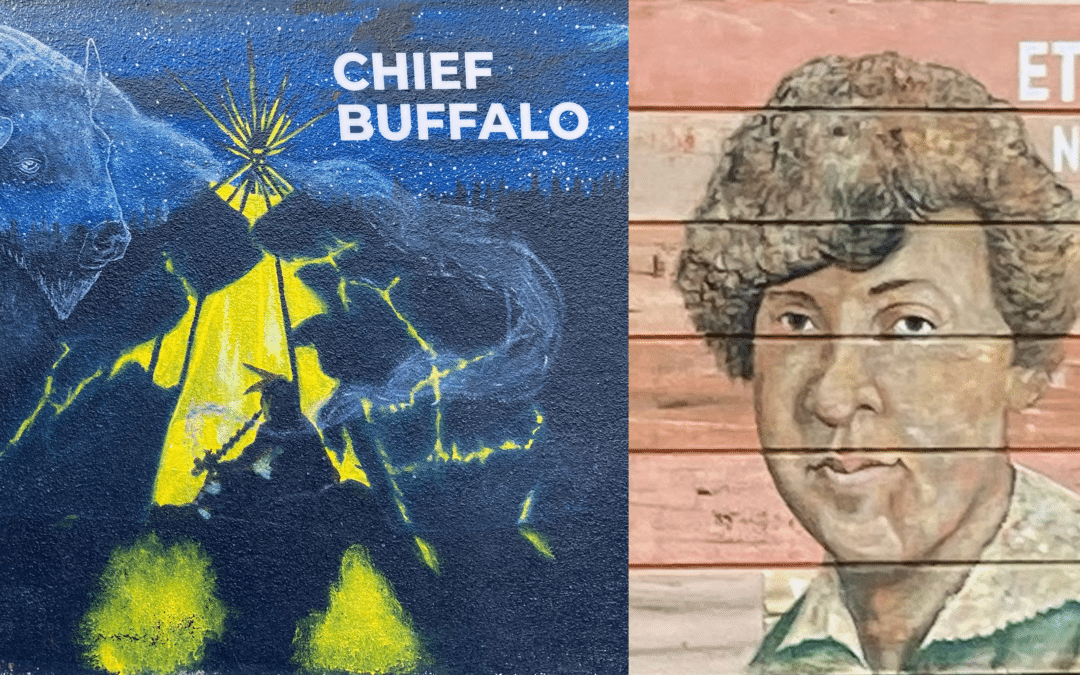(paintings from left to right by Sylvia Houle and Micheal Matthews)
In her new companion book to Biking While Black called Reimagine: A Roadmap to Justice and Joy (what she calls “the Green Book on steroids”), filmmaker and mobility justice activist Yolanda Davis-Overstreet begins with a dedication to three historic Black leaders who “solidified the meaning of mobility justice and resilience” with how they made movement possible for Black people:
- Harriet Tubman—abolitionist and “conductor” of the Underground Railroad, shepherding slaves to freedom
- Marshall Waltar “Major” Taylor—America’s first Black sports hero and World Cycling Champion, defying all adversities to become “the World’s Fastest Man”
- And Victor M. Green—author of the Green Book, providing vital safety information for Black travelers during Jim Crow
Following this example, we’d like to lift up a couple of our local mobility justice leaders—as well as the community murals that celebrate them:
- Chief Buffalo—led a journey by canoe, steamship, and train to Washington, D.C. to protest the policies of Minnesota officials seeking to remove all Ojibwe people (read about the Sandy Lake tragedy here), and helped create the 1854 Treaty which established permanent homes in reservations and guaranteed Ojibwe hunting, fishing, and gathering rights
- See Chief Buffalo’s journey depicted in the Chief Buffalo Memorial Mural (with newly erected placards!) and read Chief Buffalo’s full story here
- Ethel Ray Nance—midwife of the Harlem Renaissance and forerunner in the movement to preserve African-American history
- See Ethel Ray Nance’s story depicted in the newly completed Lincoln Park Community Garden Mural and read more about her here
- William Henry Ray—Ethel Ray’s father and founder of the Duluth chapter of the NAACP, formed following the June 1920 lynching of Elias Clayton, Elmer Jackson, and Isaac McGhie four blocks from the Ray home
- Read Ethel Ray Nance’s description of this turn of events here
Leave a comment with anyone else you think we should add to our list of local mobility justice leaders, and let us know what Hillside changemakers you’d like to see depicted in a mural on 6th Avenue East!


Recent Comments